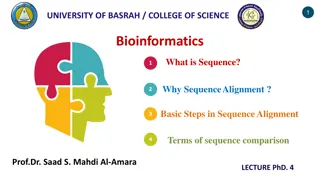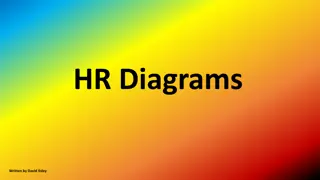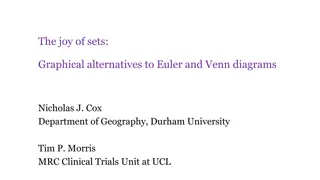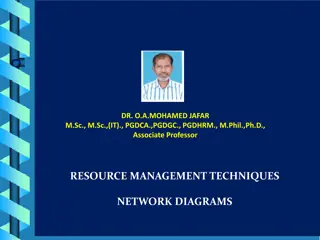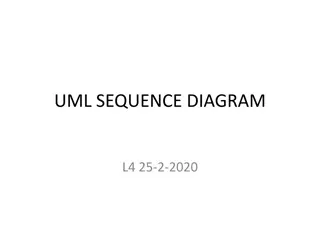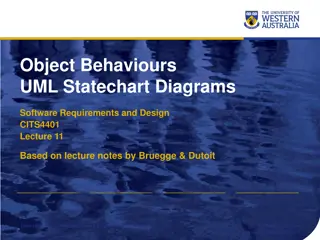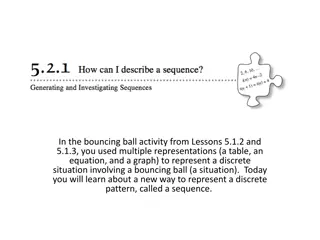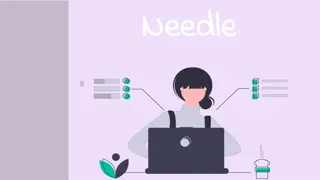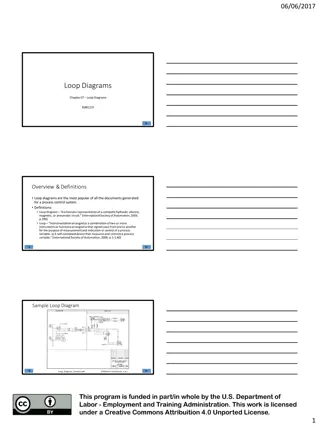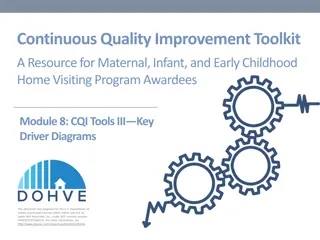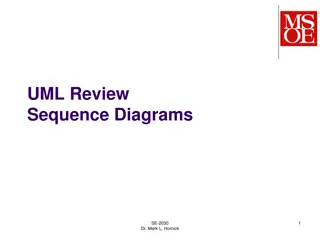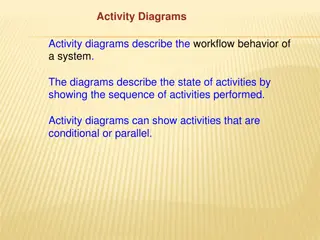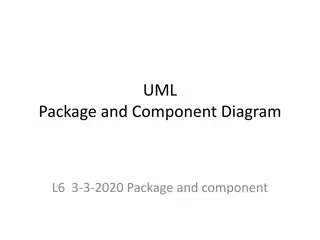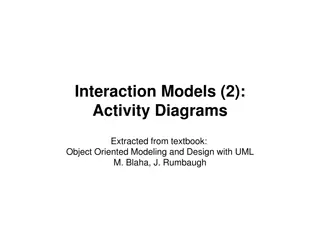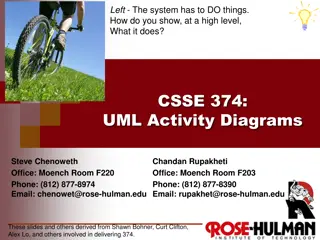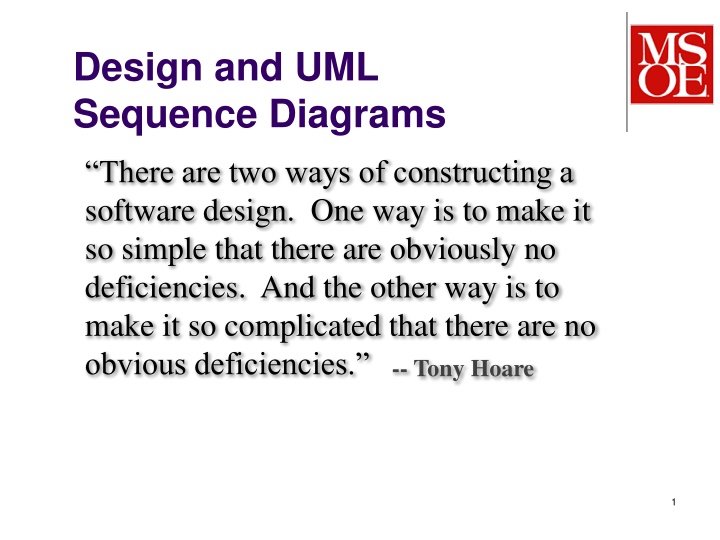
Constructing Software Design: Simple vs Complicated Approach
Learn about the two approaches to constructing software design - keeping it simple without deficiencies or making it overly complicated. Explore the limitations of these approaches as software grows in complexity. Discover how textual analysis of use case scenarios can help in creating high-level designs by identifying nouns and verbs.
Download Presentation

Please find below an Image/Link to download the presentation.
The content on the website is provided AS IS for your information and personal use only. It may not be sold, licensed, or shared on other websites without obtaining consent from the author. If you encounter any issues during the download, it is possible that the publisher has removed the file from their server.
You are allowed to download the files provided on this website for personal or commercial use, subject to the condition that they are used lawfully. All files are the property of their respective owners.
The content on the website is provided AS IS for your information and personal use only. It may not be sold, licensed, or shared on other websites without obtaining consent from the author.
E N D
Presentation Transcript
Design and UML Sequence Diagrams There are two ways of constructing a software design. One way is to make it so simple that there are obviously no deficiencies. And the other way is to make it so complicated that there are no obvious deficiencies. -- Tony Hoare 1
Creating a Design How did you design your software in other projects? What are the limitations of those approaches as software gets bigger/more complex? 2
Textual Analysis of Use Case scenarios / User Stories is used to create high-level designs Precondition: Source material should be complete, so that all capabilities of the system are described Textual Analysis is a quick and easy way to make a first guess at the classes that will comprise the system 3
Textual Analysis: looking for the nouns and verbs -in your Use Cases/User Stories Nouns in the Use Cases are candidatesfor the classes you need to write Grammar 101: nouns are things Verbs in the Use Cases are usually the methods that the classes implement Verbs are actions 4
Approach: Read through each Use Case, picking out the nouns appearing in the scenario descriptions You re actually discovering objects, which are instances of classes that abstract the problem domain entities As a student I would like to see my grades in Blackboard in order to know how I am doing in a class. As a bank customer I would like to deposit checks using my phone in order to avoid going to the bank. 5
After identifying nouns, eliminate redundancies list of names name collection array of names Names Welcome message Welcome dialog Welcome screen Welcome Screen Note: Do not identify individual Buttons, Checkboxes, Menus, etc as individual nouns; these would all be part of a parent screen. 6
Some Nouns can be excluded The following nouns are not candidates for classes: user retrieves cash from ATM user inserts envelope into ATM Experience and common sense help here. 7
Write the objects and methods for the following User Stories... As a Facebook user, I would like to be able to read my messages when I get a notification so I can respond appropriately. As a Facebook user, I would like to respond to messages in the same window as I read the message so I can respond appropriately. As a Facebook user, I would like to see when someone else has read my sent messages so I can know whether I should keep monitoring them. 8
UML Sequence Diagrams A sequence diagram is an interaction diagram that emphasizes the time ordering of messages It shows a set of objects and the messages sent and received by those objects Objects are arranged along the X axis Messages are ordered in increasing time along the Y axis
Sequence Diagram Account Box: Object/Entity With a dashed line descending from it The line is called the object lifeline Actor: Treated the same as a box Different icon
Sequence Diagram ATM Account checkBalance() Messages are horizontal arrows being Passed from object to object Typically methods/functions return Time advances down the object lifelines
Sequence diagrams illustrate high-level interactions (method calls) A given Sequence Diagram shows just one interaction for a specific circumstance e.g. startup, shutdown, processing a single button click, Classes and objects can interact with one another in many different ways Generally the interaction shown is interesting or important for some reason checking : Account ATM savings : Account status = withdraw(100); status = deposit(100); main(); 12
Startup Sequence Diagram public class ATM { private static Account checking = new Account(); private static Account savings = new Account(); private ATM() { } public static void main(String[] args) { // perform some initial transactions boolean status = checking.withdraw(100); status = savings.deposit(100); } } //end ATM checking : Account ATM savings : Account main(); status = withdraw(100); status = deposit(100); 13
Notation & representation The name of the class appears at the top of a Sequence Diagram rectangle Which can also (optionally) include the name of the object representing a particular instance of that class: [<object_name> ]: <class_name> chkAcct : Account chkAcct is the name of the reference to an instance of an Account 14
Example 15 Critiques?
Lets try an example Lets create a sequence diagram for starting a Car Critiques? Lets create a sequence diagram for opening and closing a door 16
Another Example Create a sequence diagram Based on the user stories analyzed previously Shows the process of a mobile app user Opening the Facebook app Checking messages Replying to a message Closing the app 17
Further refinement: Object classification Boundary Objects Model the system boundary User Interface elements (entire screens, but not individual ui elements) Interfaces to external actors (e.g. databases) Control Objects Represents an entity or manager that makes decisions (e.g. figures out what to do when a button is pressed) In simple systems, this is usually the application itself, and there is typically only a single Control Object (thread) Entity Objects A data store or persistence element that captures or represents information (often multiple objects) 1. 2. 3. The precise/permanent classification of objects is not always possible upon first review iteration is often necessary! 18
Elements must obey the following relationships 1. Actors can only talk to boundary objects. 2. Boundary objects can usually only talk to controllers and actors. 3. Entity objects can usually only talk to controllers. 4. Controllers can talk to boundary objects and entity objects, and to other controllers, but not to actors 5. There should only be one controller unless you are designing a multithreaded application. 19
The following relationships are generally restricted or not permitted 1. Actors can only talk to boundary objects. 2. Entity objects can communicate with an another Entity that it owns (e.g. an Collection owns Items in the Collection) Allowed with reservations Allowed with reservations Allowed with reservations 3. Boundary objects can talk to only very specific Entity objects (UI gets Items from a Collection to display), and other Boundary objects it owns (e.g. a popup dialog). 4. Controllers can talk to boundary objects and entity objects, and to other controllers, but not to actors 20
Demo! http://www.sparxsystems.com.au/resources/d emos/sequence/Sequence_diagram.htm Now create a sequence diagram for a simple ATM scenario 21
Sometimes, you may want to show conditional logic (selection) in a Sequence Diagram Critiques? 22
Similarly, you can illustrate iteration 23

